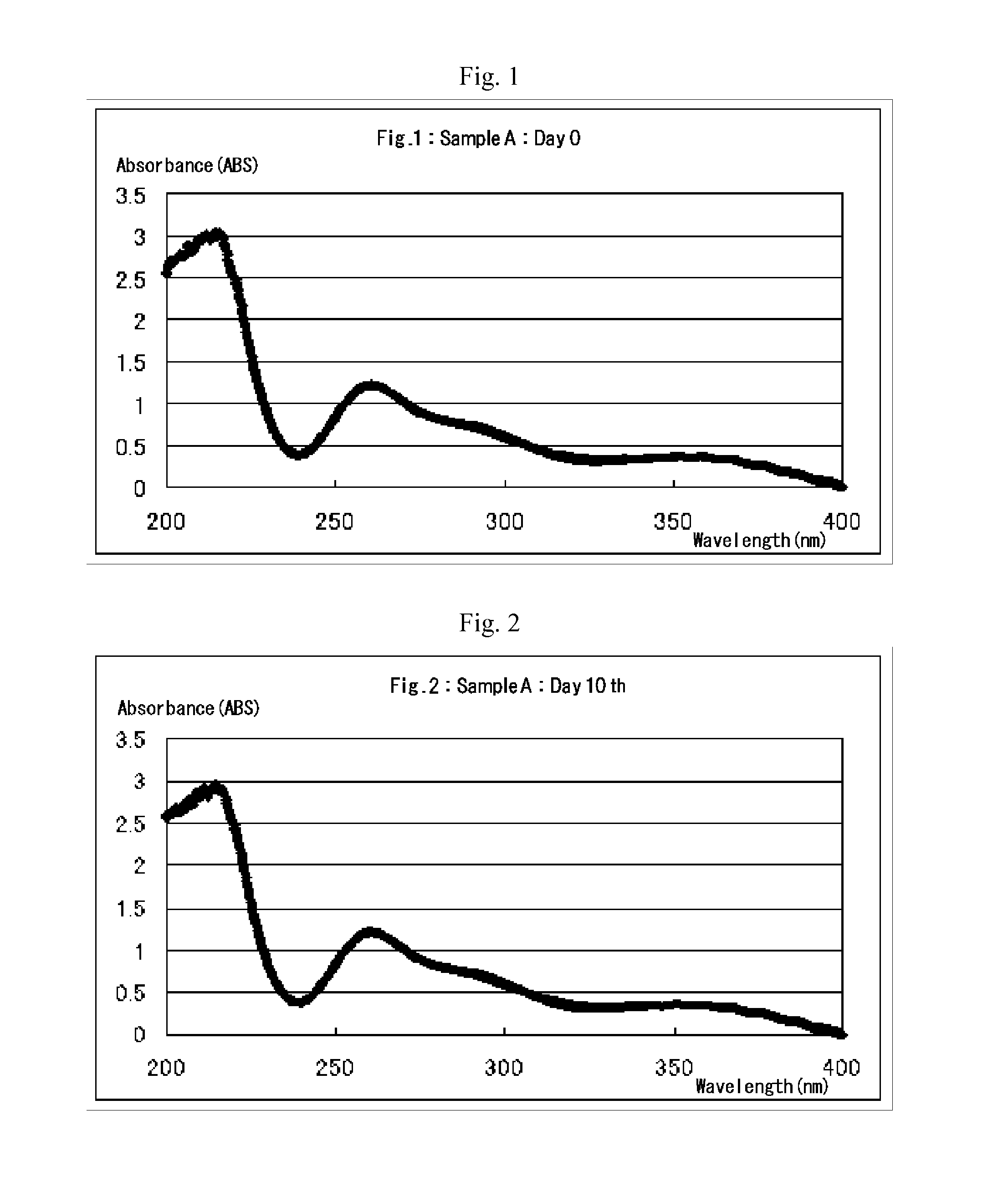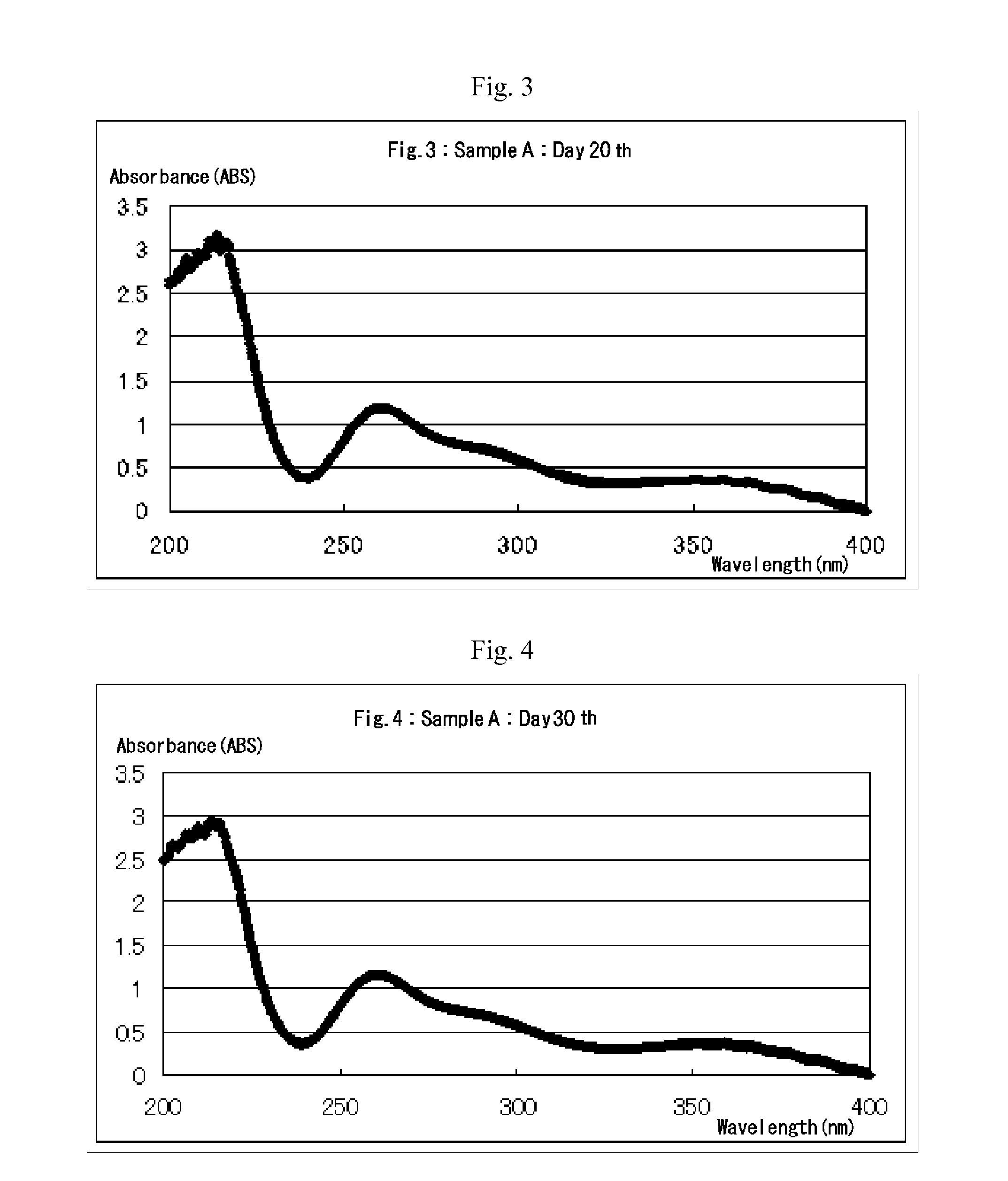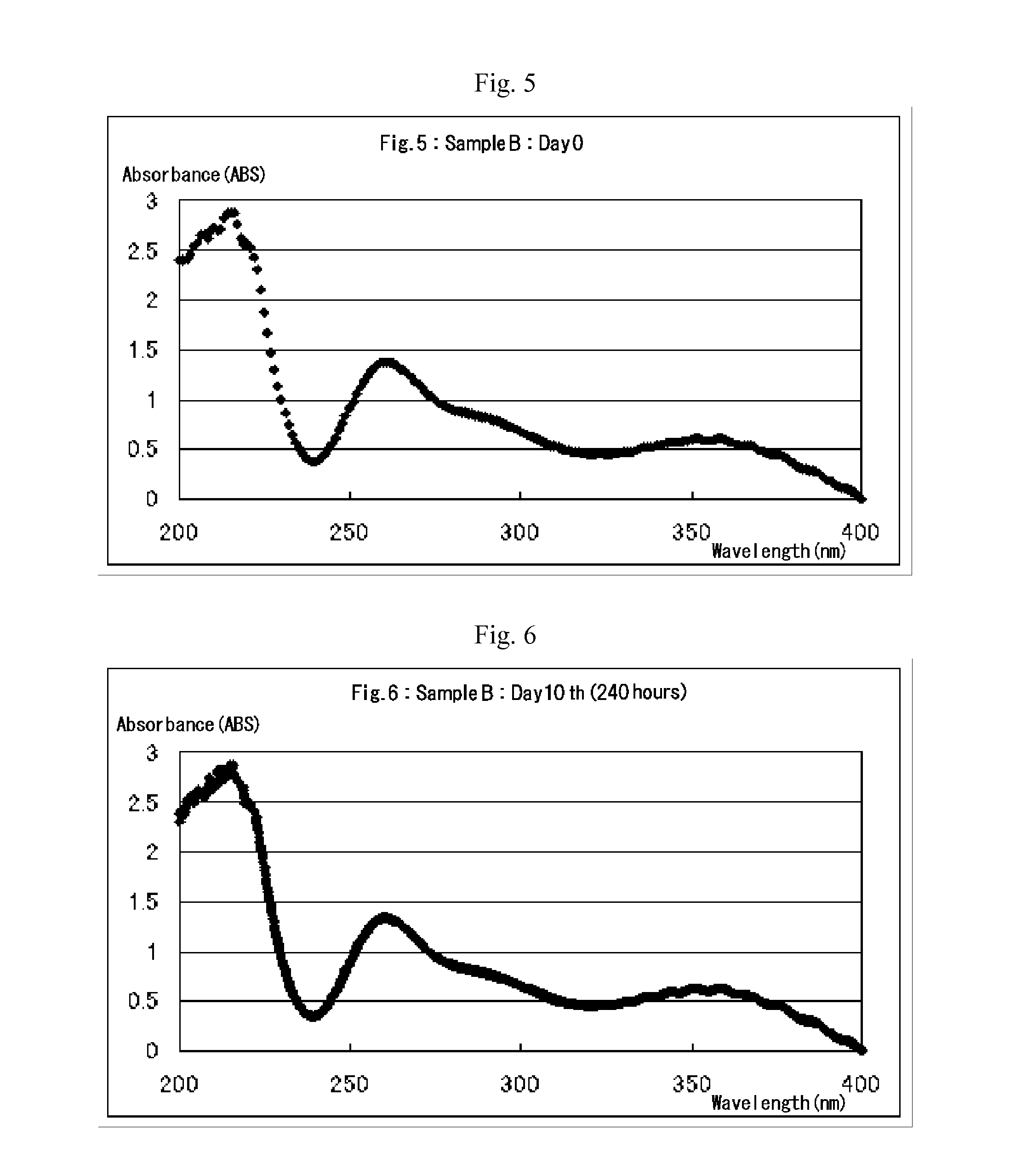Process for producing aqueous chlorous acid solution for use as disinfectant
- Summary
- Abstract
- Description
- Claims
- Application Information
AI Technical Summary
Benefits of technology
Problems solved by technology
Method used
Image
Examples
example 1
[0039]Example 1 of the present invention provides a process for producing an aqueous chlorous acid (HClO2) solution for use as disinfectant. According to this process, sulfuric acid (H2SO4) or aqueous solution thereof is added to an aqueous sodium chlorate (NaClO3) solution to create acidic conditions, thereby generating chloric acid (HClO3), and the resulting chloric acid undergoes a reduction reaction with an excess amount of hydrogen peroxide to produce chlorous acid (HClO2). The essential chemical reactions of this production process are presented by the following equations A and B:
[Chemical Formula 1]
[0040]
2NaClO3+H2SO4→2HClO3+Na2SO4↓ (Equation A)
HClO3+H2O2→HClO2+H2O+O2↑ (Equation B)
[0041]Equation A indicates that chloric acid is generated by addition of an amount and concentration of sulfuric acid (H2SO4) or aqueous solution thereof appropriate for maintaining the pH of the aqueous sodium chlorate (NaClO3) solution at 2.3 to 3.4, while sodium ions are eliminated concurrently...
example 2
[0047]Specifically, according to Example 2, the aqueous chlorous acid (HClO2) solution produced according to the process described in Example 1 is mixed with inorganic acid(s) or organic salt(s), or more specifically, at least one compound selected from the group consisting of carbonates and hydroxides or a combination thereof.
example 3
[0048]Also, according to Example 3, the aqueous solution produced in Example 2 is mixed with at least one compound selected from the group consisting of inorganic and organic acids and salts or a combination thereof.
PUM
 Login to View More
Login to View More Abstract
Description
Claims
Application Information
 Login to View More
Login to View More - R&D
- Intellectual Property
- Life Sciences
- Materials
- Tech Scout
- Unparalleled Data Quality
- Higher Quality Content
- 60% Fewer Hallucinations
Browse by: Latest US Patents, China's latest patents, Technical Efficacy Thesaurus, Application Domain, Technology Topic, Popular Technical Reports.
© 2025 PatSnap. All rights reserved.Legal|Privacy policy|Modern Slavery Act Transparency Statement|Sitemap|About US| Contact US: help@patsnap.com



